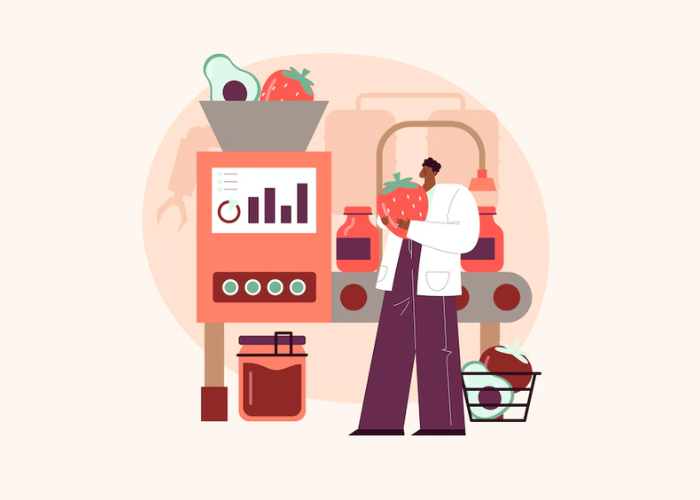Unfair demonisation of industrial foodBY PIETRO PAGANINI
- 24 October 2023
- Posted by: Competere
- Categories: News, SUSTAINABLE NUTRITION

The habit of categorizing food into “natural” (associated with homemade or directly harvested from the earth – and therefore linked to concepts of health, organic quality, and authenticity) and “processed” or “ultra-processed” food, (associated with industrial production and consequently seen as harmful, adulterated, and artificial) is spreading. Because of this categorization, industrially produced food is often confused with the so-called “junk food.”
A SHALLOW AND ERRONEOUS DIALECTIC
This dichotomy is frequently used to justify problems such as overeating, obesity, and non-communicable diseases. It is therefore exploited for commercial and political purposes to guide consumers toward natural products rather than industrial ones. They naively believe that natural products are more beneficial for health and can help address the challenges posed by an increasingly serious problem: poor nutrition. These are misleading assumptions that will not yield results. The causes of poor nutrition are multiple and very complex.
The distinction between “natural” and “ultra-processed” food is conceptually incorrect. Therefore, it is deceptive because it presents the consumer with a distorted view of reality. It is not a simple representation but a misrepresentation.
Individuals are deceived through the classic dialectic of historical materialism, which proposes the opposition between natural and healthy food on one hand and industrial and harmful food on the other. Hence, there is the communicative effectiveness of polarization between “good” food made by artisans and farmers and “bad” food from the profit-seeking industry.
TWO QUESTIONS
We need to reflect on two questions and try to solve them to demonstrate the deception of this pointless categorisation:
- Does the distinction between natural and ultra-processed food concretely help differentiate beneficial foods from harmful ones?
- Are consumers so vulnerable to industries offering ultra-processed food?
THE INGREDIENT DOES NOT HARM
Categorising food based on the level of processing, as suggested by the Nova system – a classification that aims to categorize foods based on the intensity of processing they have undergone – provides a wrong view of industrial food and idealizes natural food.
The health or danger of both does not depend on the number of ingredients present but on their caloric content and the quality of nutrients compared to the quantity consumed.
IN FACT
The presence of various nutrients can increase the risk of having overly caloric foods. On the other hand, it can increase their healthiness and shelf life, thus reducing food waste.
FURTHERMORE
Natural food can also prove to be unsuitable for health, have a short shelf life, and provide excess calories when included in an unbalanced diet.
IT’S THE SUBJECT, NOT THE NUTRIENT
The healthiness of food is not determined by its processing but by its composition and caloric content in relation to an individual’s diet. Industrial food is certainly designed to please and satisfy consumers’ psyches but is also the result of decades of investment and research to better combine health, pleasure, and caloric needs. It’s called innovation!
BUT WHAT SCIENCE!?
Thus, the term “ultra-processed food” has no objective value other than providing a breakdown of the nutrients present in a formula. It does not present any caloric value, nor the consequences it has on the individual who consumes it. Instead, it has a strong emotional impact and is used for commercial and political purposes to influence consumers’ decisions, offering them a slogan instead of detailed information on nutrients.
THE PROBLEM TO ADDRESS
We should be concerned with the portions and the availability of industrial food, i.e., its accessibility. Natural food is less accessible compared to industrial food (it does not benefit from economies of scale, is expensive, and has logistical and productivity issues), but it presents the same portion problem.
WHAT TO DO?
The real dilemma for consumers is not the production companies versus the homemade dishes but the classification of foods as “good” and “bad.” Those who classify food in these binary categories believe that consumers are incapable of making informed choices and, therefore, seek to influence them.
Consumers must have the opportunity to acquire knowledge and make informed and, consequently, free choices.
P.S. Without industrial food, 8 billion people would not be fed; three Earths would not be enough.
.
